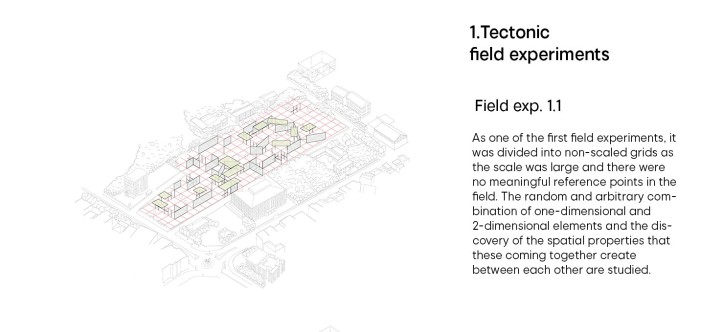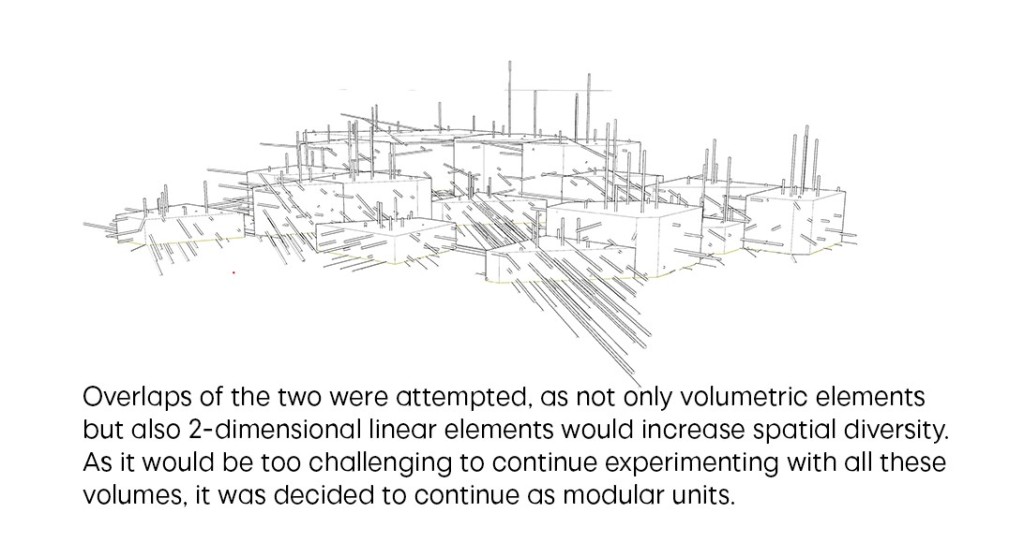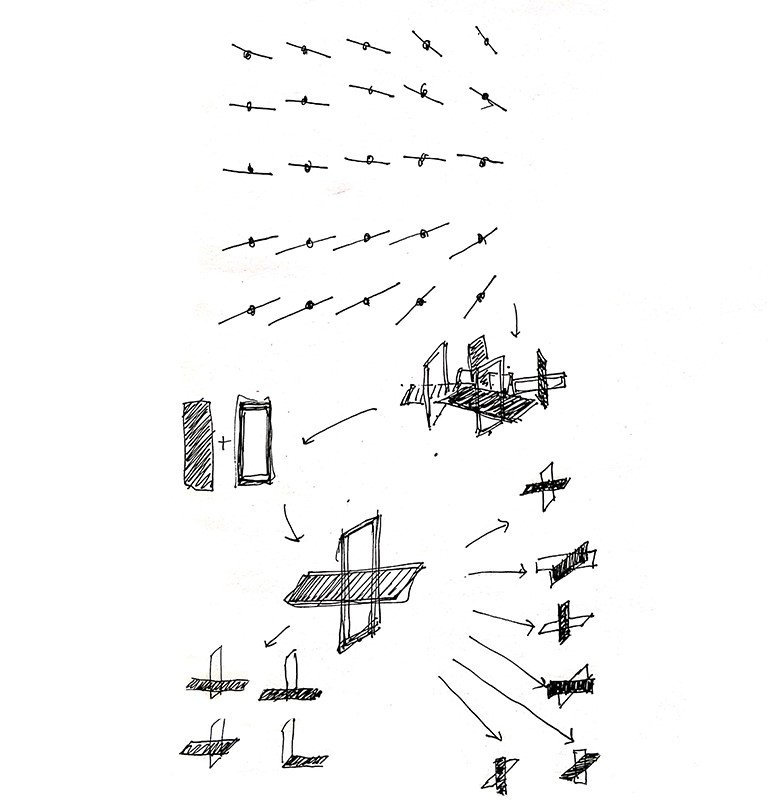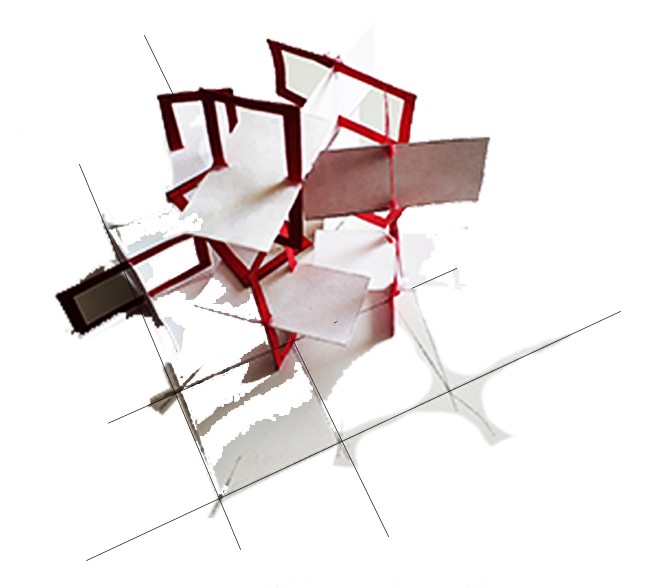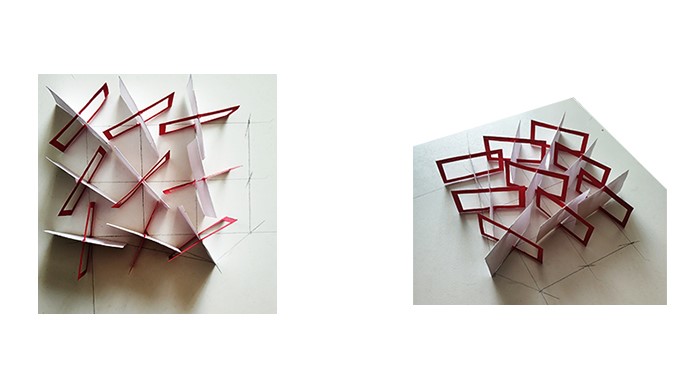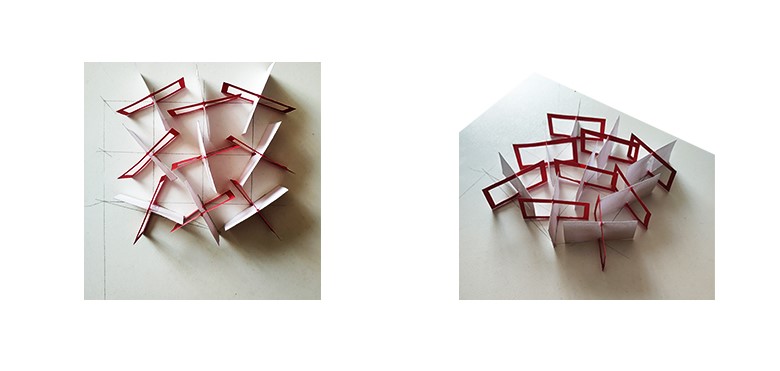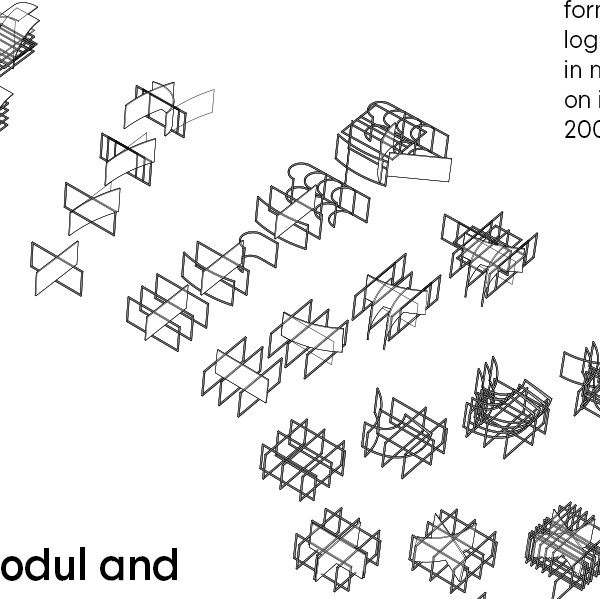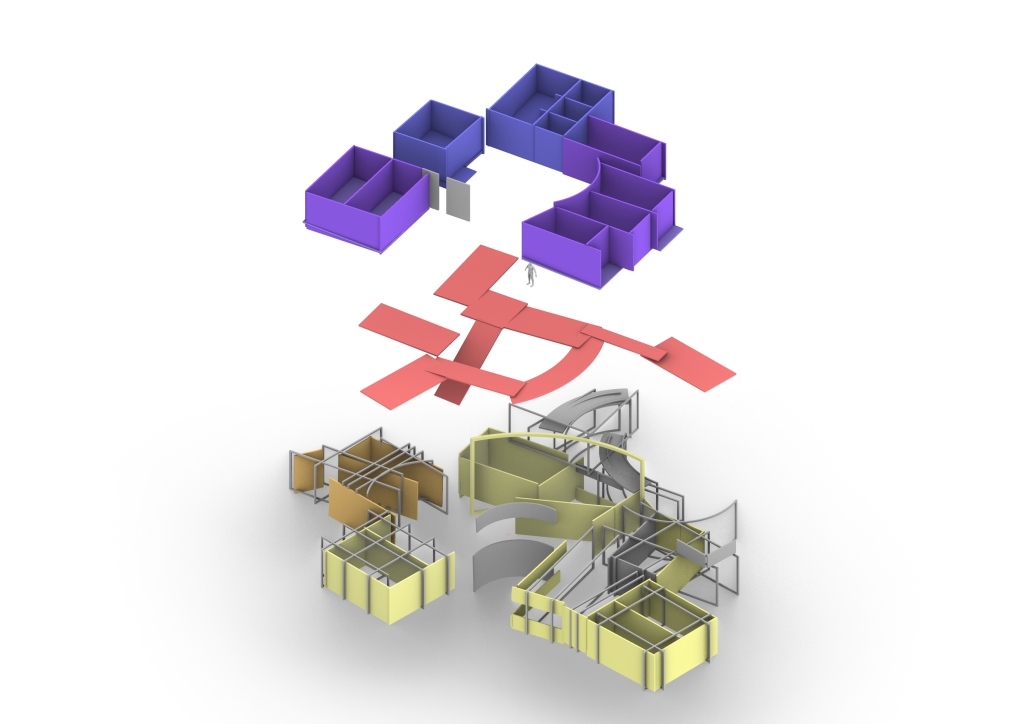
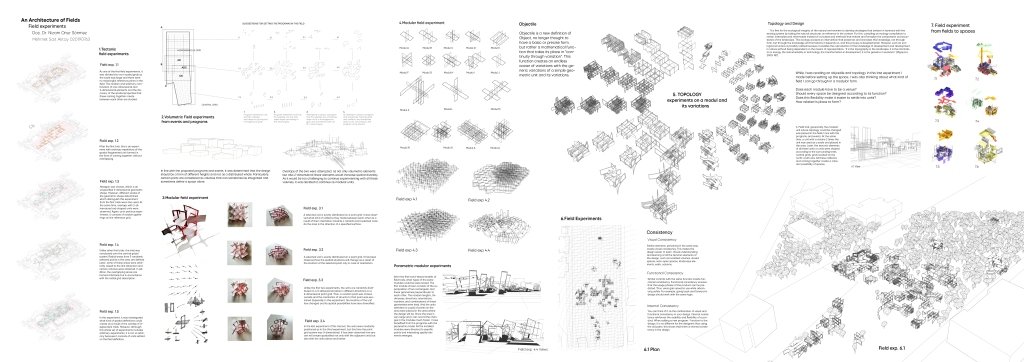
1.Tectonic field exercises

2.Program field exercises
3.Modular field exercises
Field exp. 3.1
A selected unit is evenly distributed on a point grid. It was observed what kind of collisions they made between each other as a result of their orientation towards a random point selected outside the area in the direction of a specified surface.
Field exp. 3.2
A selected unit is evenly distributed on a point grid. It has been observed how the spatial situations will change as a result of the location of the selected point only in case of orientation.
Field exp. 3.3
Unlike the first two experiments, the units are randomly distributed on a 3-dimensional plane in different directions on a 2-dimensional point grid. Then, a random point was chosen outside and the orientation of all units to that point was examined. Especially in this experiment, the location of the unit has changed and its spatial possibilities have also diversified.
Field exp. 3.4
In the last experiment of this trial set, the units were randomly positioned as in the third experiment, but this time the point grid system was 3-dimensional. It has been observed how any unit will create spatialities not only with the adjacent units but also with the units above and below.

4.Field exercises
After the first hand-tested models of field trials, what types of the same modules could be were tested. The first module chosen consists of the superposition of two rectangular and linear geometries perpendicular to each other. The random lengths, thicknesses, directions, orientations, numbers, and combinations of these geometries were tried. And the units selected on a grid of points on the area were placed in the area where the design will be. Since the area is very large and I can record the changes in the modules much faster, I have benefited from the programs with the parametric model. All the installed modules were directed to specific points and interesting spatial elements emerged.


Topology and Design
‘’It is fine for the ecological integrity of the natural environment to develop strategies that behave in harmony with the existing system by taking the natural structures as reference in the context. For this, compiling an ecology compilation to reveal, internalize and reformulate instead of concepts and methods that imitate and formalize the components and boundaries of the landscape. This ecology accepts an intervention that preserves and increases this knowledge, not through form, but through the knowledge and formations it depends on, and this process is developmental. However, such an ecological structure is possibly related because it enables the reproduction of the knowledge of development and development in nature without being dependent on the means of representation. “It is the topography in the landscape, it is the information in energy, the instrumentality in technology, the transformation in development, it is the genetics in evolution” (Migayrou; 2003: 187).
While I was reading on objcetile and topology in this last experiment I made before setting up the space, I was also thinking about what kind of field I can go through in a modular form.
Does each module have to be a venue?
Should every space be designed according to its function?
Does this flexibility make it easier to settle into units?
How related is place to form?

6. Field exercises
Field trial, generically, the modular unit whose topology could be changed was placed in the field in line with the programs and events. At the same time, a unit with a volume 2 times the unit was used as a scale and placed in the area. Later, the tectonic elements of all these units or units were shaped according to the surrounding trees, central grids, grids located on the north-south axis. All these collisions and coming together create a coherent possibility of spaces.

Consistency
Visual Consistency-
Similar elements, perceived in the same way, create visual consistency. This makes the design easier to learn. Visual understanding and learning of all the tectonic elements of the design, such as localized volumes, closed spaces, semi-open spaces, landscape elements, walls, columns.
Functional Consistency
Similar controls with the same function create functional consistency. Functional consistency ensures that the usage phases of the product can be predicted. Thus, users gain speed in use while advancing safely. For example, going back and forward in design should work with the same logic.
Internal Consistency
You can think of it as the combination of visual and functional consistency in your design. Internal consistency reinforces the usability and flexibility of a product. When adding a new program / function to the design, it is no different for the designers than using the old parts, this shows that there is internal consistency in the design.

Objectile
Objectile is a new definition of Object, no longer thought to have a basic or precise form, but rather a mathematical function that takes its place in “continuity through variation”. This function creates an endless ocean of variations with the generic variations of a simple geometric unit and its variations.
